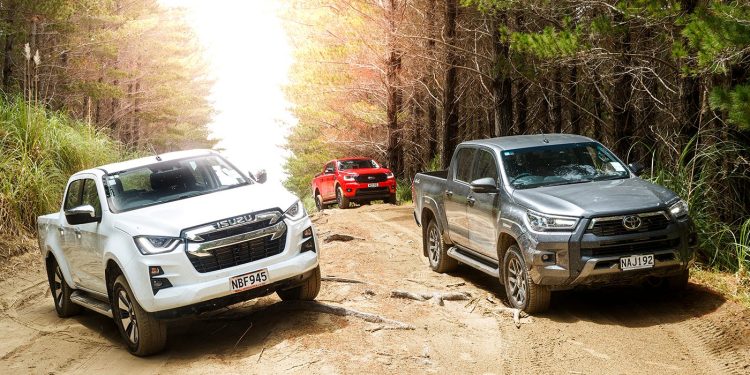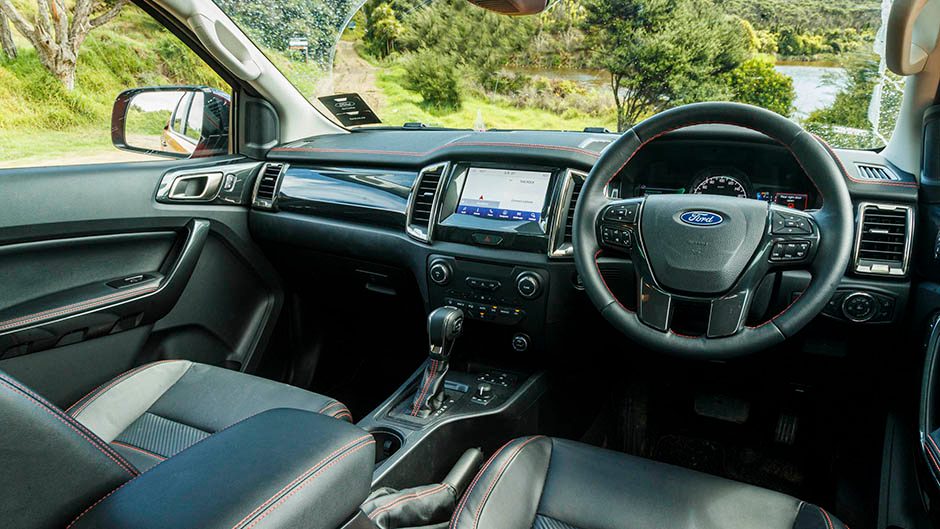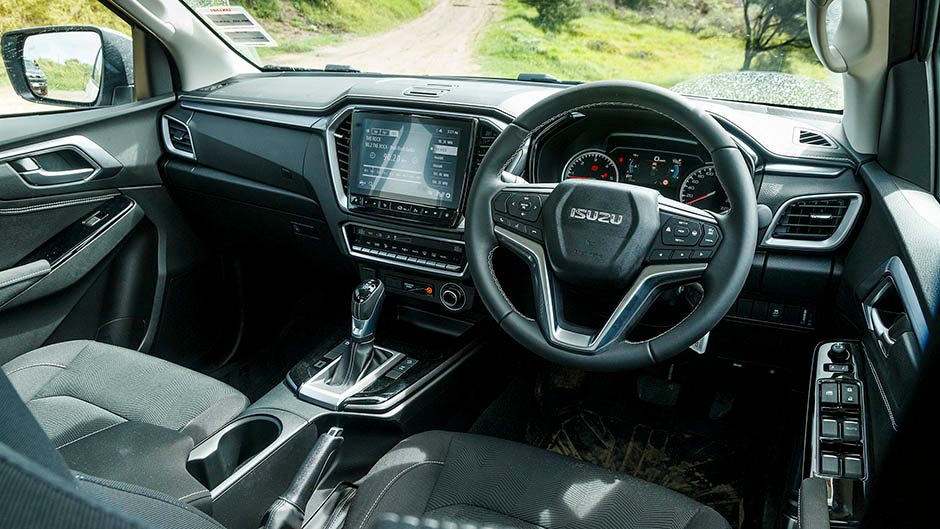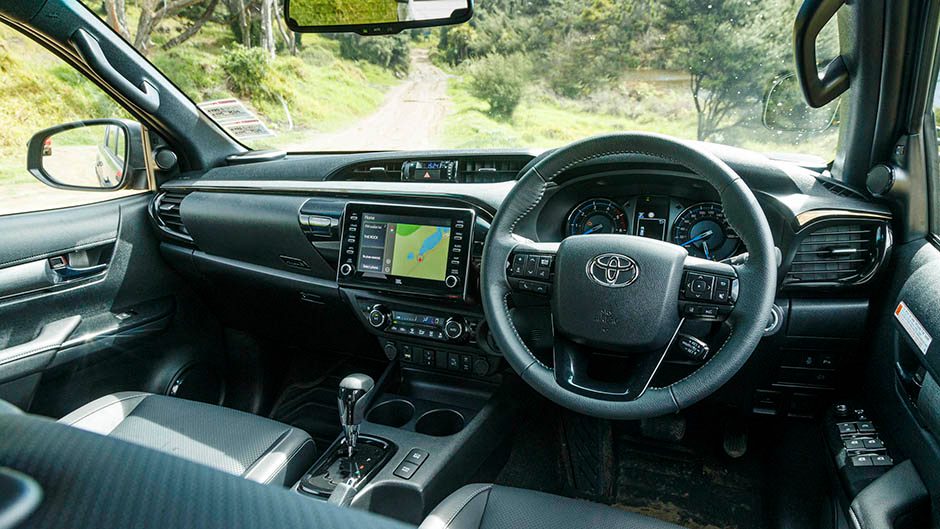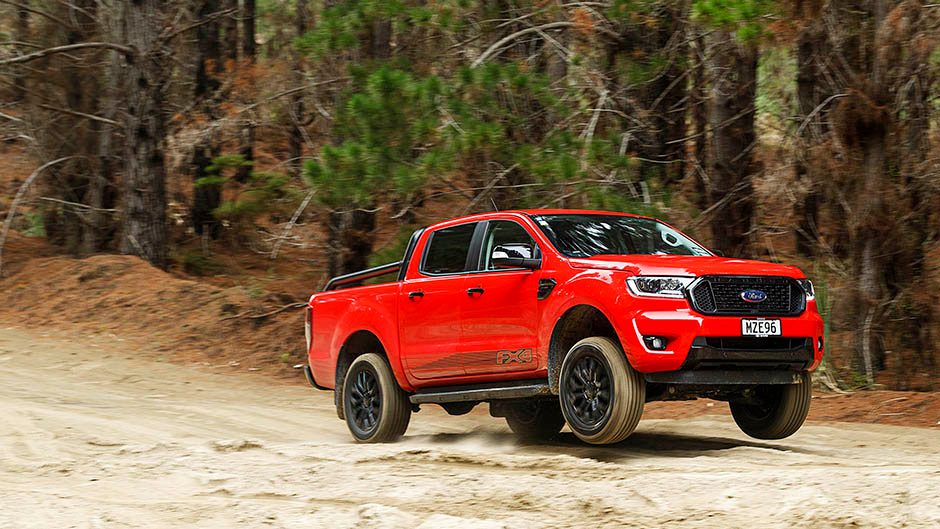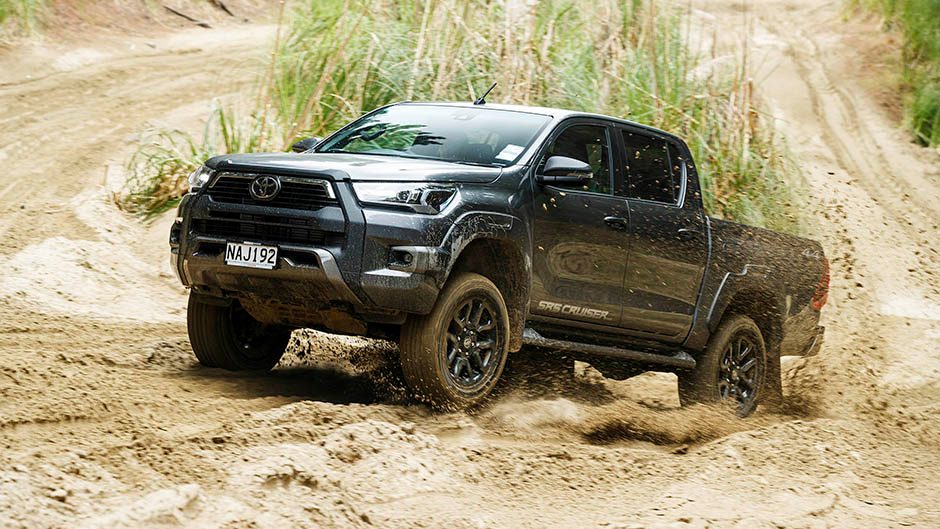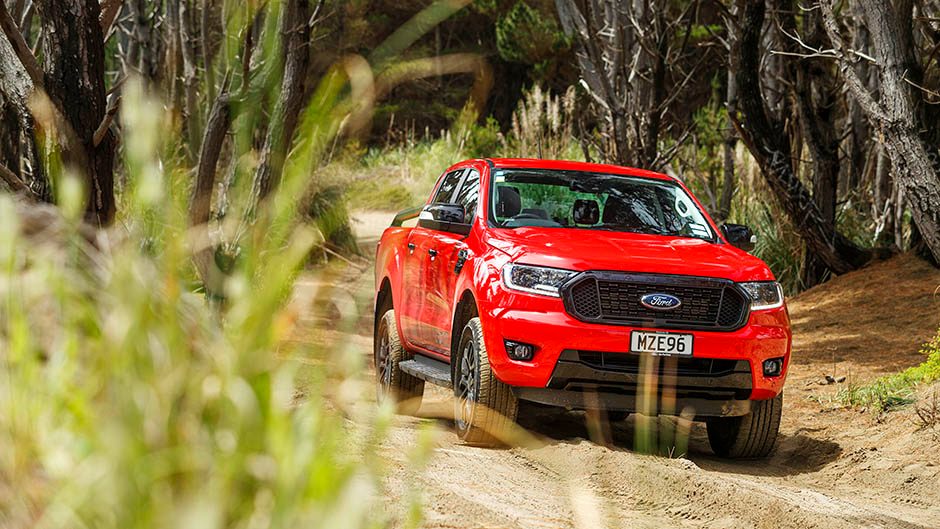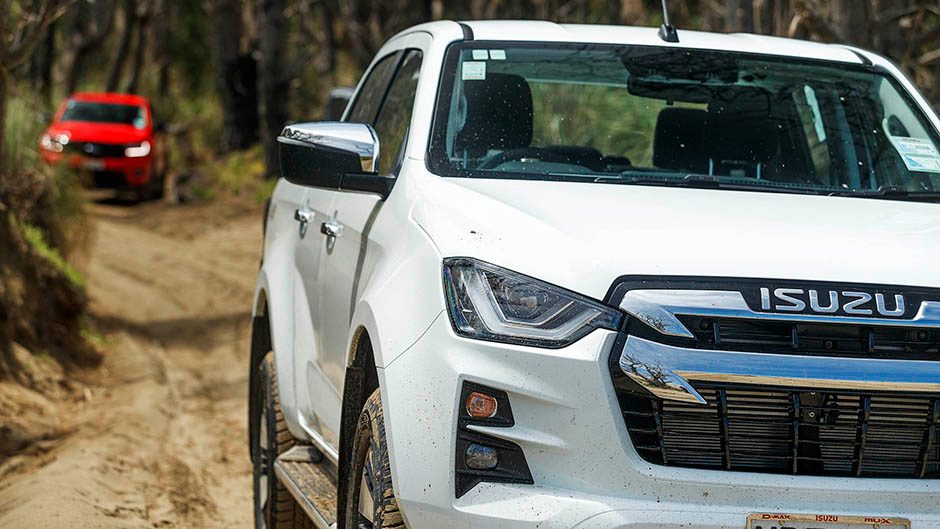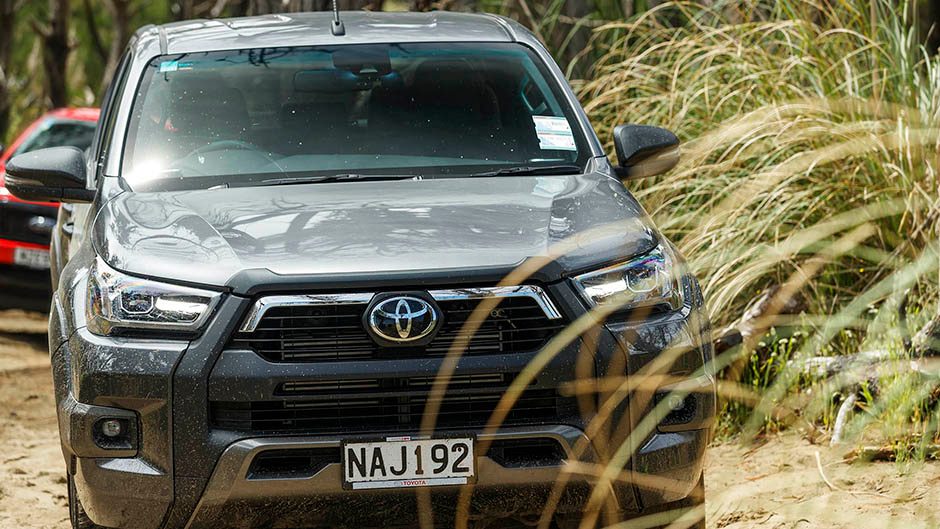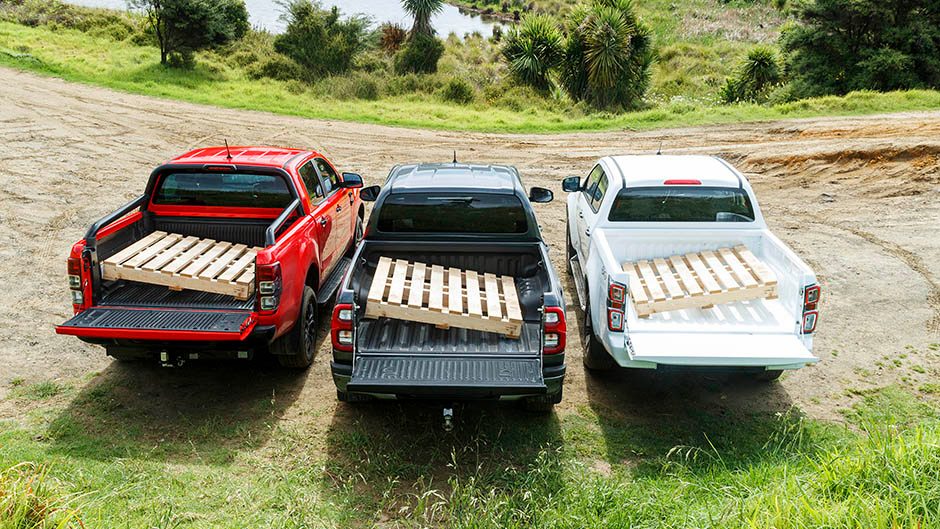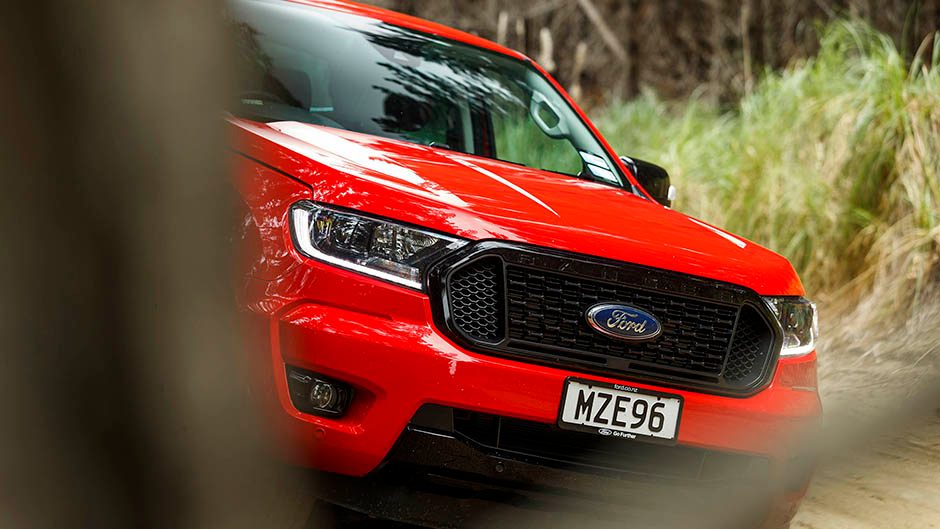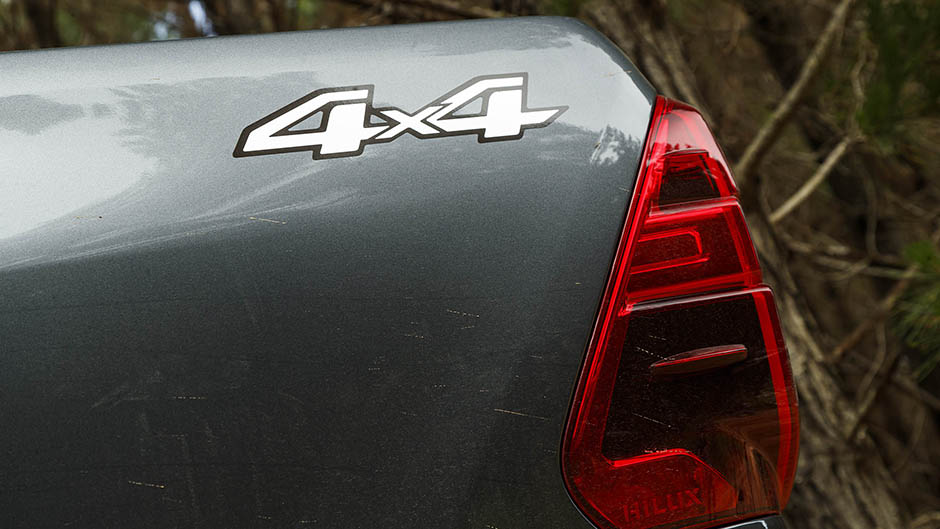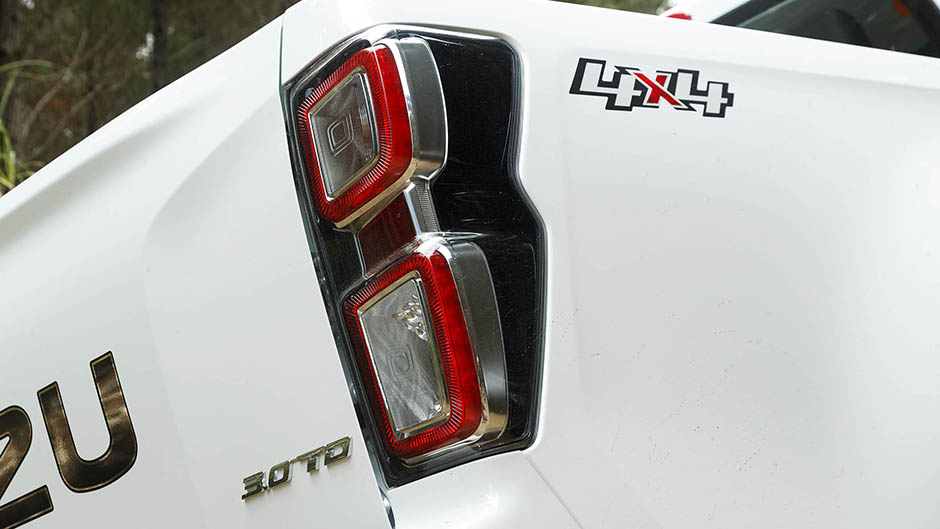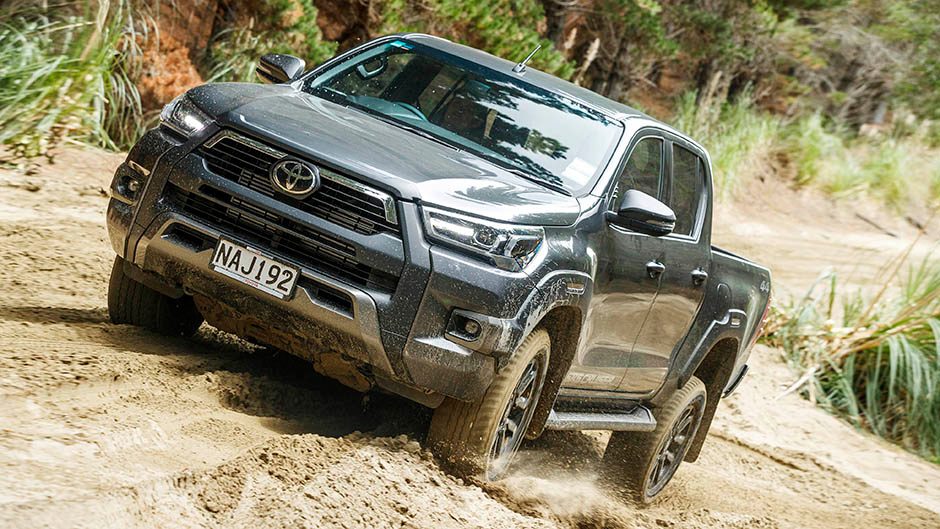2020 Isuzu D-Max vs Ford Ranger vs Toyota Hilux comparison
Words Kyle Cassidy | Photos Tom Gasnier
Double-cab utes are the automotive world’s jack of all trades. Hence their popularity. Here we compare the new Isuzu D-max with the revitalised Toyota Hilux and the bi-turbo Ford Ranger.
Once upon a time, manufacturers would roll out a new ute and a decade later, think about replacing it. A few variants would do and an automatic trans was reserved for the flashest model alone. But times, they have a-changed. The ute arena is now a hard fought, lucrative segment, accounting for one in four vehicles sold here. Buyers demand more choice and manufacturers wheel out constant refreshes to keep them interested. Just take the eighth-gen Hilux. It arrived late in 2015, was refreshed in 2017 and has again been revitalised for 2021 with yet more power, refinement and spec. Isuzu has recently unleashed a new D-Max, its first rebirth in eight years. Getting with the times, the truck has added refinement, equipment, and now leads on safety. And then there is Ranger, still selling strongly despite its age. In the wake of new arrivals, Ford has announced the bi-turbo engine will be available for more models and there are further styling tune-ups. But is it still the benchmark? Here we see if the competition has surpassed it.
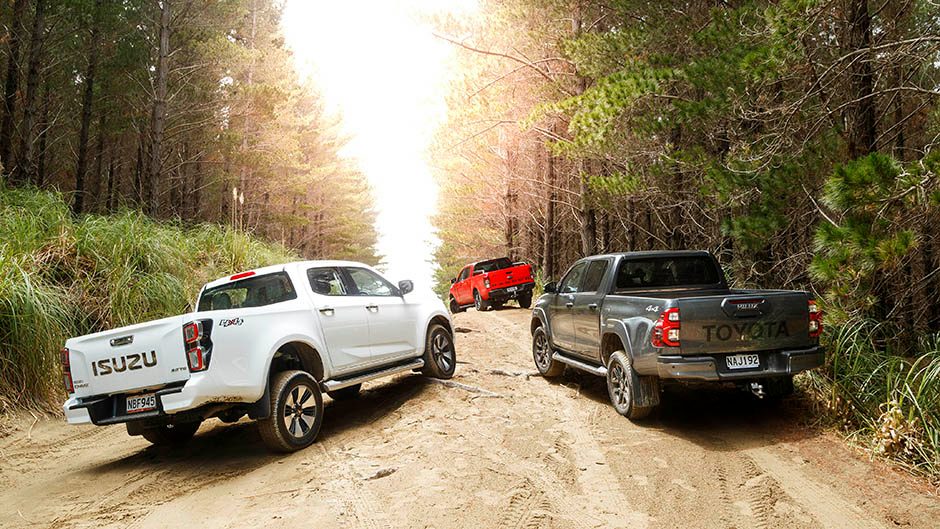
Hilux for 2021
Toyota continues to tinker with its Hilux, improving the looks, adding grunt and refining the ride. The 2.8-litre turbodiesel four now pokes out 150kW and 500Nm, at least in auto guise. The new-found thrust comes via a larger turbo and better injection system, the torque now spread across a wider rev range. Improved combustion chambers and exhaust gas recirc help ease its thirst, this SR5 Cruiser now rated at 7.9L/100km. The six-speed auto has been recal’d and the torque convertor locks up earlier to improve response and economy. Owners like their utes to have maximum capability yet demand a pampering ride. And so Toyota has tried to soothe Hilux’s unladen gait, again. The elliptical springs are now longer, they’ve added an extra leaf while the damper rates and bushings are revised. The 4×4 models get an e-LSD with individual wheel braking used to nip a spinning wheel and send the torque to the one gripping. It has the full range of Toyota’s active safety features, gaining it a five-star rating when assessed in 2019.
The top SR5 Cruiser model features here which, at $58,990, is the cheapest. And that price is Toyota’s all-in, no bargaining deal with on-road costs included, even a full tank of juice and floor mats.
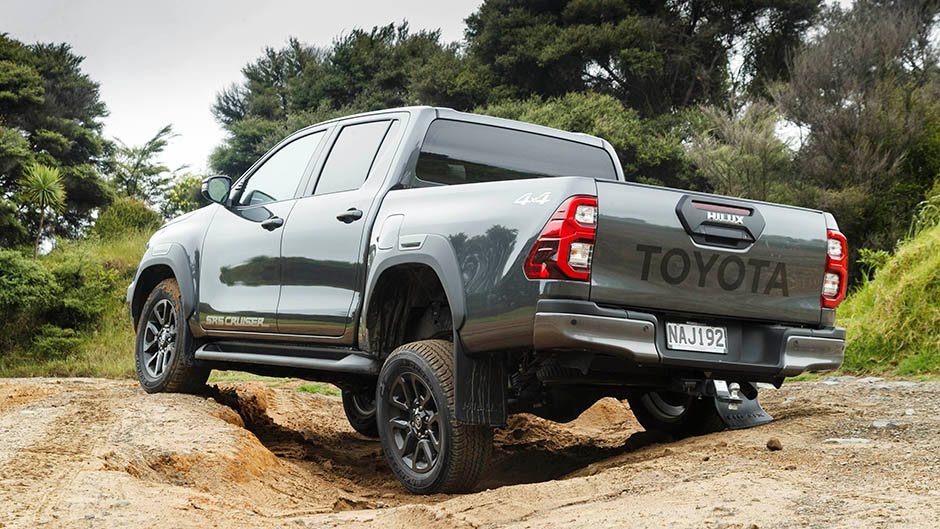
D-Max’d
Isuzu NZ calls its customers ‘Good Bastards’, who like the fact the D-Max is a truck first and foremost. While genuinely new, Isuzu has essentially redeveloped the old charger, not a bad thing given it has a reputation for dependability and robustness. The chassis has been redesigned and beefed up using better steels which they say makes it lighter and more rigid. Overall the ute is 30mm shorter, yet there’s a 30mm increase in wheelbase.
The donk is a development of the previous 3.0-litre four. Now with a better injection system, a new turbo and improved internal friction it makes 140kW and 450Nm. It mates with a revised six-speed auto and in LS 4×4 guise it’s rated at 8.0L/100km.
D-Max has a claimed 800mm wading depth thanks to a repositioned air intake. This will come in handy as 1-in-100 year floods become more commonplace. Other trucky bits include an improved diff lock function and faster engagement of 4×4 and low-range. The shock absorbers on the rear have been repositioned to provide better stability while wheel travel, axle articulation and ground clearance are all said to have improved. The steering moves to electric assistance, the ratio has been reduced for fewer turns between the stops, while they’ve managed to improve the turning circle despite the increase in wheelbase.
The cabin is all new with a nine-inch touchscreen infotainment system and more soft and inviting materials. The biggest improvement comes in safety features. The twin camera safety assist system offers dynamic cruise, AEB, lane departure with steering assist, BSM, traffic sign recognition and many more TLAs. There are also eight airbags, including one that pops up between the front passengers. D-Max has a five-star rating measured to 2020 standards.
The improvements have seen the D-Max pricing increase significantly, this mid-spec LS 4×4 with an RRP of $67,990, where it used to cost around $57k. The positioning reflects the extra content but we’d suggest that it also helps elevate the perception of the truck. It’s no longer a budget/value proposition, now worthy of consideration with the front runners, as it is here. But we reckon transactional pricing will have to fall into line with that of Hilux to ensure the Good Bastards don’t defect.
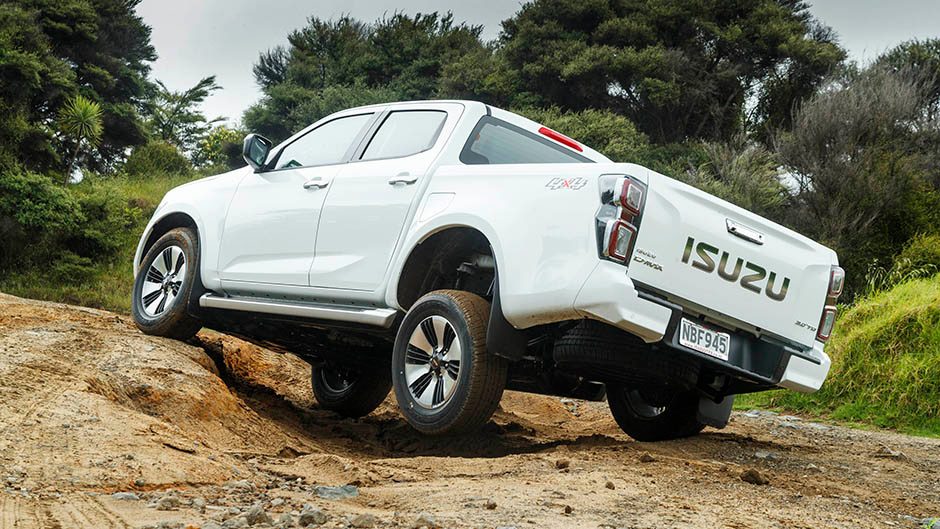
Ranger still going strong
It typically tops the sales charts but Ford doesn’t rest when it comes to Ranger, with frequent upgrades and new variants. Earlier this year it introduced the FX4, powered by the bi-turbo 2.0-litre making 157kW and 500Nm and hooked to a 10-speed auto. In 4×4 guise, Ford rates it at 7.4L/100km. FX4 fits into the range between XLT and Wildtrak and has blackened detailing, leather-accented trim and a sports bar. It has a few safety and driver aids, like AEB, speed sign recognition and lane departure warning and keeping, and while it has a five-star ANCAP rating, that was from a 2015 assessment. The FX4 is $68,990 in 4×4 guise but Ford’s open to negotiation.
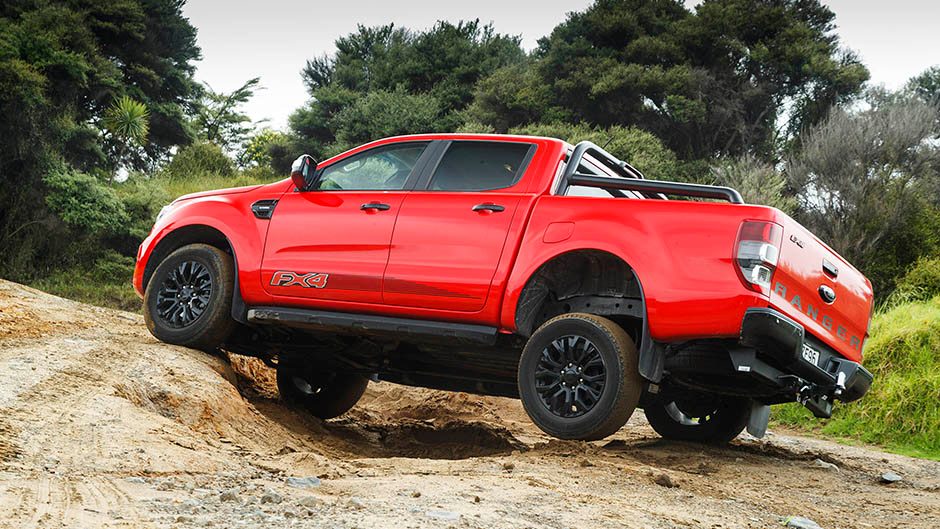
Behind the wheel
It’s here where the Ranger’s still hard to beat, still with the best ride and handling mix. The former is courtesy of its compliant rear end; it’s less likely to be bullied by bumps. This gives Ranger the most faithful steering with minimal bump steer, well weighted assistance and a fine feel. A pity Ranger owners ruin the set up by bolting on ‘choice as’ 20s. The Hilux has improved its lot, the rear end calmer over the bumps and only occasionally jostled. It turns well too, with a decent feel for the action. The Isuzu has the firmest rear end, giving more jiggle. While it turns sharply with its faster steering, the helm filters much of the feel.
The performance of the trio is quite similar though perhaps the surprise is the D-Max with a real punch to its progress. The six-speed auto is slick enough with the upshifts, but can dither on the downshifts. If you’re really keen, you’ll need to work the manual shifter. There’s no need for that in the Hilux, the broader spread of torque helping. The strongest performer is still the bi-turbo Ranger with the flattest torque curve and the slickest transmission.
At a town and around pace, much the same applies in terms of progress, the Ranger cools more of the blemishes, though Hilux is much improved this time around. You’ll feel the jolts of the sharper edges more in D-Max.
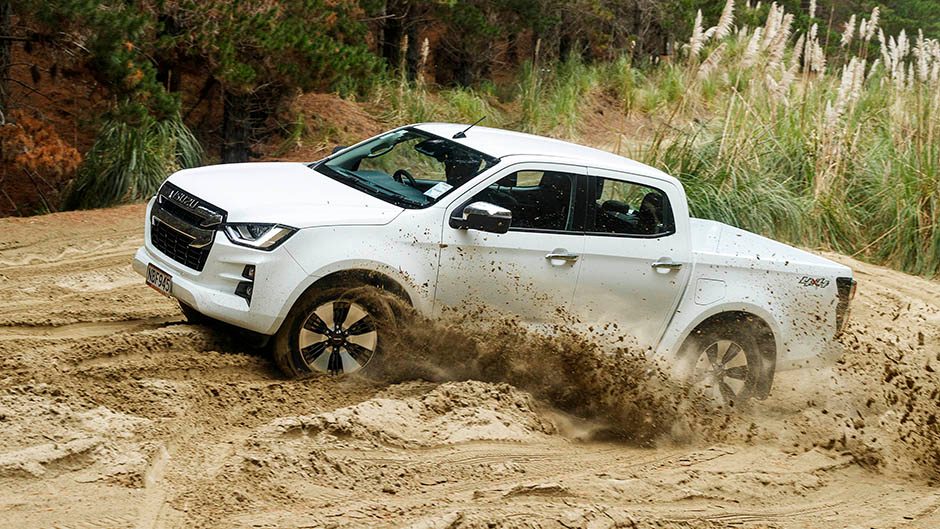
Hilux’s hydraulic steering has a new ‘variable flow control valve’ making it lighter at parking speeds, yet it requires more effort and is slower between stops than the electrically assisted Isuzu, which is commendly light, and so too the Ranger. But the Toyota has the best turn around.
None of them labours the point off the mark, the D-Max particularly punchy, getting on its torque peak quickly. The Hilux is pretty sharp too, sharper still in its PWR mode, and as long as the Ranger’s idle/stop system doesn’t foul proceedings, the twin-turbo boosts quickly, while being aided by the ten-speed’s low first gear. Overt diesel clatter isn’t such a feature here, all reasonably hushed for a ute, though you hear them under the pump.
As to fuel use, the trip computers were reading in the low 10L/100km range for Hilux and D-Max, the Ranger in the nines.
This Ranger lacks some minders such as blind spot monitoring though, like the others, has decent mirrors. It misses out on active cruise too. In the Hilux, this only works above 30km/h, while the D-Max will haul you to a halt, but then disengages. The Isuzu lane departure warning gets a bit annoying at times, and is not easy to disable.
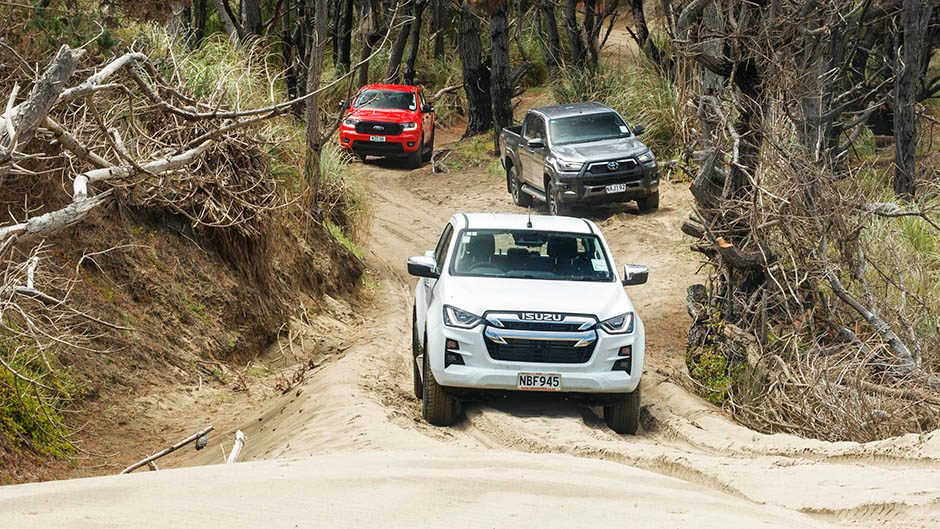
Come on in
It’s inside where the Hilux shines with its SUV-like cabin treatment. It wins the quality award, as even its hard plastics are good. Its seats are heated and powered up front, the leather trim with a more genuine feel than the Ranger’s. Hilux’s new eight-inch display gains hard buttons to help operations, but some of the soft buttons are hard to punch on the move. All have CarPlay and Android Auto for those hooked on their phones, while Ford’s Sync is our pick of the infotainment systems for ease of use and functionality. Hilux certainly has the best sounds from its nine-speaker JBL system.
The D-Max’s cabin gains the most improved award, with some classy materials on display and air con buttons that remind of a Merc. There are however a few sharp edges not present in the others. The big screen dominates, and though its resolution could be better, it’s quick to respond and we like the space invader noises the buttons make. Its steering wheel has the best feel where the controls for the safety minders are well laid out and the seats have the best form and comfort.
Hilux offers (slightly) better legroom and seat comfort in the rear, with well placed grab handles for the little ones to clamber on board. The other two aren’t bad, though the D-Max’s seat is a little too upright.
All tow the requisite 3500kg, and payloads aren’t too dissimilar, the Ford just over 1000kg, the others just below. For tray space, the Ranger is wider between the wheel wells but shorter overall, again, not by much. Hilux has the heaviest tailgate to lift, the Ranger’s genuinely light thanks to a helper spring.
Go anywhere
Hilux aced our articulation test, exhibiting the best ground clearance, axle twisting ability and traction. It managed to rumble up and over the clay bank in 4×4 high, where the others were scabbling initially until selecting low range and engaging the diff lock to help get them up and over. The Isuzu was stymied by the safety system detecting an obstacle and cutting the power. This system needs to be disabled deep in a sub-menu before adventuring too far and wide, otherwise it’ll cause more problems than it will solve. The Hilux also descended over the edge without touching down, whereas both the Ranger and D-Max’s underbelly got a brief tickle up. The Isuzu’s harder ride comes to the fore in the rough stuff; it takes the pounding better and is easier to keep tracking straight.
But which to choose?
The deal will be key for those loyal to Ford and Isuzu, because the Hilux, at this price point, is hard to beat. The added torque helps it keep up with the bi-turbo Ranger (and would comfortably outperform the 3.2) and the improved ride heightens it’s better in-cabin experience. It’s also a goat off track, and is capable in terms of towing and hauling. D-Max loyalists shouldn’t shun the new equipment and safety features, as they’ll come in handy. It’s still capable, but now a whole lot easier to live with. Ranger is still the best drive, as long as you keep the factory rims, and get a good deal on the price.
| Model | Isuzu D-Max LS 4×4 |
| Price | $67,990 |
| Engine | 2999cc, IL4, TDI, 140kW/450Nm |
| Drivetrain | 6-speed auto, switchable 4×4 |
| Fuel Use | 8.0L/100km |
| C02 Output | 207g/km |
| 0-100km/h | 9.71sec |
| Weight | 2056kg |
| Model | Toyota Hilux SR5 Cruiser |
| Price | $58,990 |
| Engine | 2755cc, IL4, TDI, 150kW/500Nm |
| Drivetrain | 6-speed auto, switchable 4×4 |
| Fuel Use | 7.9L/100km |
| C02 Output | 207g/km |
| 0-100km/h | 9.95sec |
| Weight | 2184kg |
| Model | Ford Ranger FX4 4×4 |
| Price | $67,890 |
| Engine | 1996cc, IL4, TDI, 157kW/500Nm |
| Drivetrain | 10-speed auto, switchable 4×4 |
| Fuel Use | 7.4L/100km |
| C02 Output | 195g/km |
| 0-100km/h | 9.18 |
| Weight | 2175kg |


